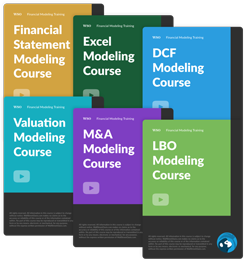Adjusting an index return for an outlier
I was once confronted with this task at work and wasn't 100% on how to approach it (luckily the presentation was dropped completely and i didn't have to deliver something concrete on this). Maybe this will be relevant for someone else in the future, so thats why i'd like to share things.
Say we have an Index such as the S&P 500 Information Technology and i have access to such an index via factset. I want to eliminate an outlier (e.g. Nvidia) that had an incredibly strong performance in recent times, but at the same time only makes up a small portion of the index, if weighted by market cap.
The message i would want to convey would be: Even without Nvidias performance, the index still would have a good performance. So really, a mere adjustment.
How would i approach this? I wouldn't know where to find the weights used in the index calculation - another idea would be to pseudo-"replicate" the index by pulling the market caps of all constituents at date x and at date y and then simply measuring performance (with or without the outlier). It would not be the proper index anymore, but it might be a viable alternative given that the constituents are the same.
Are there any inconsistencies / pitfalls / tricks i am not aware of?
Your help is greatly appreciated! Thanks in advance guys



The way you propose is fine. S&P is market-weighted, so another option would be to take NVDA market cap / aggregate market cap to figure out what portion of the index NVDA comprises and back out that portion of the index times NVDA's gain from the overall S&P gain.
This is going to sound flippant, but if your profile is accurate and you're a first year IBD analyst, anything that isn't inherently stupid and that you footnote well will work and go over fine. So, try to avoid killing yourself on stuff like this (i.e. please don't pull 499 individual companies to replicate an index if Factset doesn't easily allow you to add / remove companies from a preset index)
thanks for the helpful reply, greatly appreciated!!
i got this task back when i was an intern and it really bugged me that i didn't finish it / know a clear strategy to tackle it next time. Usually, I try to stick to 30mins / hour limits with non-crucial analysis problems, way to easy to get caught up wasting time otherwise.
Nonetheless, back then, i spent at least 3 hours trying to figure this out... it really takes some discipline to accept not being able to figure something out on your own and move on (if you cant seek help at the time)
Gotta check that function on factset - do you know where exactly it would be located?
Cheers!!
Factset allows you to remove individual names from indices and run attribution on those indices sans x,y,z names
Pretty sure you can do this on Datastream, Thomson One, Bloomberg Excel add-in too. What is the rationale for adjusting an index for positive outliers though?
Thanks man, I'll try and have a look - not using the bloomberg addin too much, would you mind quickly sketching how it's done (keywords would be a great help)? Unfortunately i'm pretty sure I'd get lost on this again otherwise...
The underlying situation was that at the time, NVIDIA stock appreciated ~1000% in value, with the next best performer only yielding (if i remember corretly) ~150%. After that, a sharper drop-off in returns to around 25%.
Rationale was to show "Alright, we did consider that we have this one stock that might distort the overall index performance upwards, we looked into it and we're not drawing false conclusions based on that." It was really more of a pre-caution to make sure no one can easily contest our hypothesis of a well-performing market
Cheers!
Ut ullam labore eaque non. Dolores sed est possimus. Possimus omnis cum quaerat eos est laboriosam aut. Quo quos atque sed rerum. Unde suscipit cumque nostrum nisi repudiandae. Suscipit rerum dolores unde pariatur consequuntur rerum officiis. Sit facilis cumque delectus eos aut delectus inventore iusto.
Et sed sit odio alias et. Non aliquam deleniti cupiditate laudantium et quia impedit minus. Qui porro expedita architecto voluptate minus est est.
Unde voluptatum eius quia architecto incidunt illum minus. Dolorem est omnis ratione. Corrupti dignissimos culpa adipisci aut.
See All Comments - 100% Free
WSO depends on everyone being able to pitch in when they know something. Unlock with your email and get bonus: 6 financial modeling lessons free ($199 value)
or Unlock with your social account...